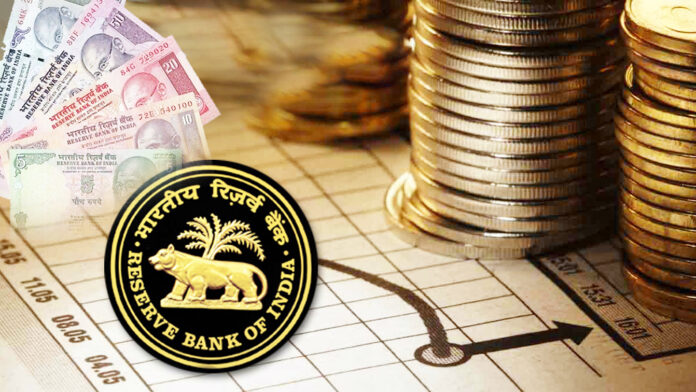RBI’s policy easing bodes well for accelerating economic activity.
Last week’s reduction of the repo rate—also called the policy rate—by 50 basis points, along with a cut in the mandatory cash reserve ratio for banks by 100 basis points (or 1%), is being hailed as a landmark move by the Reserve Bank of India. Until now, much like most central banks in the developed world, it had adopted a conservative stance in setting such parameters, prioritizing price stability over the promotion of economic growth. Though by simultaneously signalling that it will henceforth adopt a “neutral” stance—no longer an “accommodative” one that guarantees further rate cuts in upcoming reviews—its latest pronouncements explicitly demonstrate a greater concern for effecting economic growth.
The need to balance growth with inflation management and macroeconomic stability is especially pressing in today’s international environment, which is plagued by a host of challenges. Prolonged geopolitical conflicts, the resultant economic uncertainties, and the increasingly inward-looking policies of the United States—which threaten not only the global economy but also its own long-standing economic exceptionalism assiduously built over decades—are all matters of serious concern. Additionally, the growing urgency of climate change adds to this complex landscape. Rightly so, such eventualities seem to have impacted the decisions of the Monetary Policy Committee, charged with setting the central bank’s policy rates and making other related weighty decisions.
In the months since February 2025, following the appointment of Governor Sanjay Malhotra, this marks the third successive cut in the repo rate. With the earlier two reductions of 25 basis points each, the Central Bank’s lending rate has declined from 6.5% to 5.5%—its lowest level in the past three years. No doubt, with a tolerable inflation rate of 3.16% in April 2025 and an outlook of 3.7% for FY 2026 (compared to the previously anticipated 4% CPI), there was headroom to vary its approach. The recently harvested Kharif crop has been satisfactory, the ongoing monsoon is expected to be normal, and the next round of crop-sowing should proceed on time. In such a benign scenario, the Bank chose to front-load and significantly reduce both the repo rate and the CRR simultaneously. The Bank’s projection of GDP growth at 6.5% for FY 2026 has been maintained, but the new Governor hopes it would reach 7%, leveraging the Bank’s latest measures along with the government’s fiscal and other supportive policies.
TURNING MONETARY POLICY MEASURES INTO GROWTH STIMULI
RBI, in its press release following the Governor’s press conference announcing the recent measures, expects a whopping sum of Rs 2.5 trillion (equivalent to about 60% of last year’s GDP) to be released into the system by commercial banks by the end of 2025. Such a high level of prime-pumping, facilitated by the phased reduction of the mandatory Cash Reserve Ratio (CRR) from 4% to 3% over the two months beginning early September, should not be considered overly optimistic. Commercial banks have now been enabled to lower their lending rates. With the reduction in the repo rate, banks’ borrowing costs from the central bank have declined to 5.5% from 6.5% just four months ago.
The extent to which the reduction in the repo rate translates into lower lending rates for commercial banks will, of course, vary from bank to bank, depending on their overall cost of deposits and their perception of borrower -risk. Be that as it may, with due care taken to protect the banks’ profitability by lowering the cost of funds, the recent monetary -easing can reasonably be expected to drive higher aggregate consumption and investment—the two sin qua non for hastening growth. Conscious of the relatively modest reduction in lending rates by commercial banks in response to the repo rate cuts of February and April 2025—and the time lags involved—the RBI this time has simultaneously reduced the CRR. This move will allow banks to increase the funds available for lending. It will also generate revenue for them, as the funds mandatorily parked with the RBI do not earn interest. As expected, the Union Government has welcomed the combination of rate cuts and liquidity infusion. Its Finance Secretary expressed hope that “it will help in enriching and sustaining the growth momentum and facilitate private investments.”
LIKELY IMPACT ON ECONOMIC GROWTH
The billion-dollar question remains whether private consumption and investment will, in fact, pick up soon. In Q4 FY2025, when the economy grew by 7.4%—its highest this fiscal—private consumption increased by only 6% and its share of GDP fell from 60% in the previous quarter to 53%. Going forward, with lower borrowing rates and greater liquidity in the system, the sale of homes, automobiles, and other durables can be expected to rise—especially during the festive season from August to November, the four months when most businesses in these sectors generate about half of their annual sales. Real estate developers in the affordable and mid-income housing segments are particularly bullish, as demand in these categories is highly sensitive to interest rate changes. So too are auto and white goods manufacturers with regard to entry-level products. Monthly EMIs for middle-class borrowers are expected to decline. Furthermore, the lower income tax rates announced in this year’s Union Budget, along with the rationalization of duties on several such goods, should supplement disposable incomes in the hands of consumers.
However, it remains to be seen whether capital formation in the Indian economy will get the much needed boost. The private sector has not stepped on the domestic investment pedal over the past ten years. The private Gross Fixed Capital Formation (GFCF) had peaked at 40% of total investment in 20I6-17, fuelling nearly 8.2% GDP growth—both figures marking the highest levels in the past decade. In 2024-25, at 34.6 % it has hit its nadir in a decade. In recent years, capital formation has been led primarily by the governments and their public enterprises – the two together accounted for about a quarter of the GDP last financial—the share of the Centre and the states increased by 2.5 % to 13 % and their PSUs to 11.8 %. The increased emphasis on the creation of infrastructure—such as highways, airports, seaports, and power projects—has sustained both the investment levels and the consequent GDP growth.
Most private entities, despite having healthy bottom lines and the capacity to expand, have remained rather watchful. Their continued reticence to invest in greenfield projects and new technologies stems from the alleged underutilization of their existing capacities. With aggregate demand having steadily increased over the past few years following the pandemic—and expected to receive a further boost from the recent easing of monetary policy—the previously hesitant private sector, which has so far followed a wait-and-watch approach, can be expected to become more proactive in meeting the expanding domestic market.
No doubt, a number of other macro- and micro-level conducive factors are required to induce capacity creation, particularly from the state and district administrations on the ground. However, the oft stated constraint of weak demand as a reason for not investing may no longer persist across most economic activities. In this regard, the Production Linked Incentive (PLI) Scheme of the Union Government, spanning over a dozen manufacturing sectors, has demonstrated Indian firms’ ability to expand operations with frugal new investments and ad hoc improvisations.
Besides the tardiness in the growth of Indian merchandise exports over the last decade, and its adverse impact on domestic capital formation and expansion by Indian firms, foreign direct investment (FDI) into India has also come under pressure. Although gross FDI inflows have been gradually rising—registering a 14% increase to US$88 billion last year despite a challenging global geopolitical environment—a significant share continues to go into services, fintech, and the acquisition of stakes in brownfield projects. A more concerning factor is the sharp decline in net FDI, which fell to below one billion dollars—the lowest level in nearly two decades, since Indian policymakers began viewing FDI as a crucial supplement to domestic savings and a source of technology and managerial skills. The recent downward revision of GDP growth for 2024–25, from the beginning -of- the- year estimate of 7% to 6.2%, can be partly attributed to this decline in overall investment.
Alluding to the net FDI being impacted, the RBI Governor, in his post-MPC meeting press conference, explained the large outflows in the form of capital repatriations, dividends, and royalty fees as a sign of the robustness of India’s regulatory framework and foreign exchange market. True as that might be, the near disappearance of FDI as a meaningful contributor to India’s growth trajectory calls for a reassessment of the underlying conditions and policy environment. This issue demands urgent attention, especially at a time when developed nations and others are actively pursuing a China Plus strategy in their supply chain management—and India is widely expected to be a major beneficiary of this global realignment.
* Dr Ajay Dua is a former Union Secretary of Commerce and Industry, and a development economist from St. Stephen’s College, Delhi and the London School of Economics. In 1992, the Mumbai University had awarded him a Ph.D. degree.







